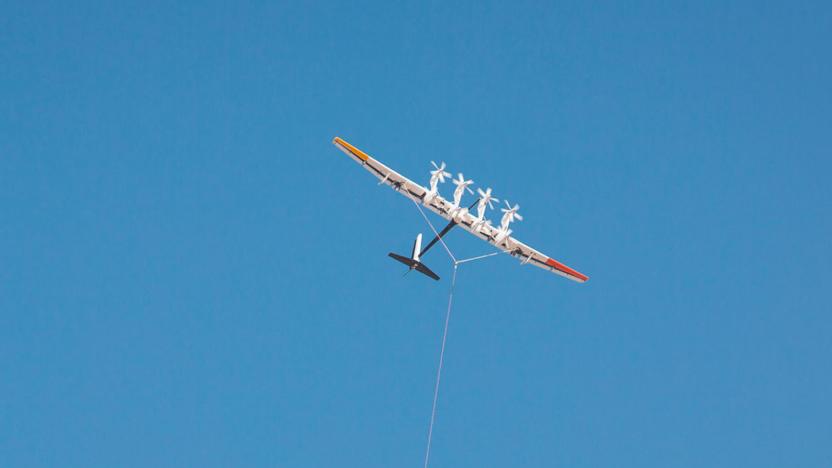xlabs
Latest

Shell backs Alphabet's power-generating kites in latest renewable bet
Alphabet is turning yet another one of its X projects into a business, but this time it's enlisting the help of an unusual ally. Makani Power, a venture making electricity-generating kites (see above), has become a full-fledged subsidiary of Alphabet thanks in part to a minority investment from Shell -- yes, the fossil fuel giant. The two hope to shift the technology from the land to offshore, where winds are stronger. They're betting that the kites will be easier to deploy than conventional wind farms, since they could deploy with floating buoys instead of requiring platforms that reach down to the ocean bed.

Huawei is considering cell towers that wirelessly charge drones
Huawei's big news at MWC was, of course, the P10 handset and a new watch. The company does have its fingers in other pies, though, and one of those is the drone game. Far away from the exhibition halls where all the smartphones are on display is an area called "Innovation City" (it's more of a hamlet, but we'll go along with it). Here, Huawei is demoing a number of quirky ideas, one of which is a grand plan to help solve the short battery lives of drones -- and it's as curious as it is clever. In case you were worried, that's a scale model of a cell tower above. The plan isn't to have mega drones.

Google simulates the human brain with 1000 machines, 16000 cores and a love of cats
Don't tell Google, but its latest X lab project is something performed by the great internet public every day. For free. Mountain View's secret lab stitched together 1,000 computers totaling 16,000 cores to form a neural network with over 1 billion connections, and sent it to YouTube looking for cats. Unlike the popular human time-sink, this was all in the name of science: specifically, simulating the human brain. The neural machine was presented with 10 million images taken from random videos, and went about teaching itself what our feline friends look like. Unlike similar experiments, where some manual guidance and supervision is involved, Google's pseudo-brain was given no such assistance. It wasn't just about cats, of course -- the broader aim was to see whether computers can learn face detection without labeled images. After studying the large set of image-data, the cluster revealed that indeed it could, in addition to being able to develop concepts for human body parts and -- of course -- cats. Overall, there was 15.8 percent accuracy in recognizing 20,000 object categories, which the researchers claim is a 70 percent jump over previous studies. Full details of the hows and whys will be presented at a forthcoming conference in Edinburgh.

